
Read the full article here:

The Menas Borders blog brings cutting edge news and analysis of all of the major border disputes. We have decades of practical hands-on experience in advising both governments and natural resources companies about their offshore and onshore border related questions. This blog intends to bring some of our knowledge to a wider audience. Please see our website (www.menasborders.com) for more information.

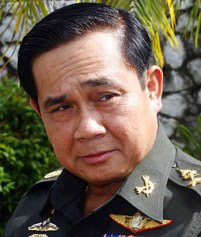
 Indian soldier in Kashmir
Indian soldier in Kashmir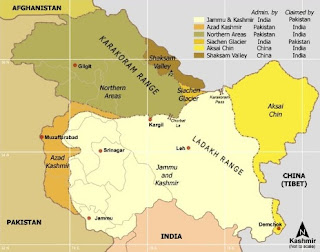 In the late nineteenth and early twentieth centuries, Great Britain tried to establish the northern boundaries of Kashmir through agreements with Afghanistan and Russia. China, however, never accepted these agreements, and considers parts of eastern Jammu and Kashmir to be part of Tibet, and therefore Chinese.
In the late nineteenth and early twentieth centuries, Great Britain tried to establish the northern boundaries of Kashmir through agreements with Afghanistan and Russia. China, however, never accepted these agreements, and considers parts of eastern Jammu and Kashmir to be part of Tibet, and therefore Chinese.For more information, including analysis of possible settlement routes, see the full Menas Borders' Border Focus.
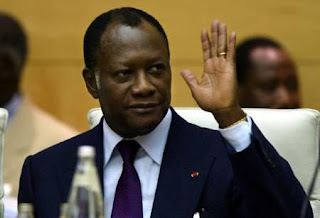 Alassane Ouattara is recognised as winning the Cote d'Ivoire Presidential Election
Alassane Ouattara is recognised as winning the Cote d'Ivoire Presidential ElectionSources: Liberian Observer, Mail & Guardian Online, BBC News
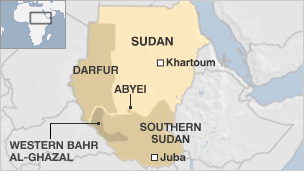
 Malaysian PM Najib with Bruneian Sultan Hassanal
Malaysian PM Najib with Bruneian Sultan HassanalSources: Rigzone, Bernama, NNN
For more information on the Malaysia-Brunei offshore oil dispute, see menas borders.
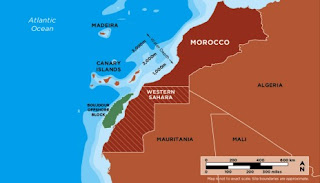 Kosmos Energy's blocks are offshore Western Sahara
Kosmos Energy's blocks are offshore Western SaharaSources: Petroleum Africa, People's Daily
For more information on the situation in Western Sahara, see a menas borders briefing from 2009.
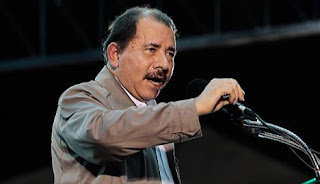 Nicaraguan President Daneil Ortega
Nicaraguan President Daneil Ortega Thousands of DRC nationals have been expelled from Angola in recent years
Thousands of DRC nationals have been expelled from Angola in recent years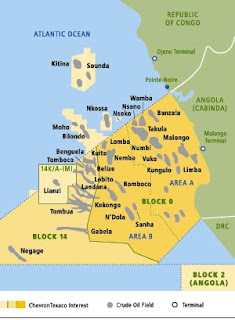 Despite Cabinda's small size, its abundant natural resources, particularly hydrocarbons, mean it has been hotly disputed over by foreign powers and nationalist movements.
Despite Cabinda's small size, its abundant natural resources, particularly hydrocarbons, mean it has been hotly disputed over by foreign powers and nationalist movements. Chilean President Pinera celebrates the miners' rescue in October
Chilean President Pinera celebrates the miners' rescue in October A southern Sudanese man living in Darfur registers to vote
A southern Sudanese man living in Darfur registers to vote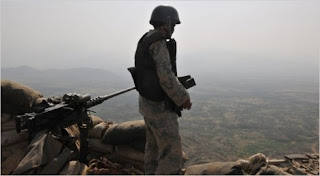 A Saudi border guard looking into Yemen
A Saudi border guard looking into Yemen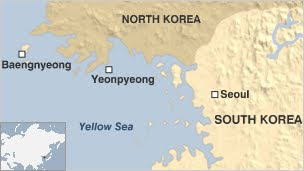
 A South Koreans soldier patrols the DMZ
A South Koreans soldier patrols the DMZ  Since the 1950s the tension on the peninsula has remained high and there have been numerous border clashes. A series of low-level armed clashes around the DMZ area between 1966-69 has been called the Second Korean War by some; there have been numerous assassination attempts on South Korean presidents by the North; and the North has dug at least four tunnels crossing under the DMZ in what appears to be preparation for a military strike. The North claims that they are for coal mining, and the walls have been painted black to give the appearance of coal.
Since the 1950s the tension on the peninsula has remained high and there have been numerous border clashes. A series of low-level armed clashes around the DMZ area between 1966-69 has been called the Second Korean War by some; there have been numerous assassination attempts on South Korean presidents by the North; and the North has dug at least four tunnels crossing under the DMZ in what appears to be preparation for a military strike. The North claims that they are for coal mining, and the walls have been painted black to give the appearance of coal. 
The dispute centres around the San Juan River, which starts in Lake Nicaragua, and becomes the natural border between Nicaragua and Costa Rica for much of its 120 mile course to the sea. For more than a century, the countries have sparred over navigation and fishing rights on the river, although the issues were largely settled by an International Court of Justice (ICJ) ruling in 2009.
The ICJ decision regarded that Costa Rica has navigational rights on the river, but that Nicaragua maintains the power of regulation. In essence, they ruled that in the regions under dispute, the border lay, not in the middle of the river, but on the Costa Rican bank. The river itself is in Nicaraguan territory.
The Costa Ricans, unsurprisingly, were not happy about the plan, especially when Security Minister Jose Maria Tijerino revealed photos showing that the river sediment was being dumped on Costa Rican territory. Ortega had communicated his plans to San Jose, of course, but the Costa Ricans accused the Nicaraguans over breaking promises.
“We had a guarantee,” Costa Rican Vice Foreign Minister Carlos Roverssi, told reporters Tuesday 26th October. “They were going to conduct only a small dredging that wouldn't affect Costa Rican territory. But what happened is a violation of our national sovereignty … that changes the circumstances.”
Farmers on the Costa Rican side have also alleged that a group of armed men have invaded their land, harassed workers and killed livestock.
It is this land invasion that has gotten Google in trouble; it is also the point in which most media coverage starts, ignoring the crucial background to the story. The leader of the dredging project is Sandista revolutionary hero Eden 'Comandante Cero' Pastora, a close ally of the Nicaraguan president. Upon being accused of crossing the border, setting up camp on a disputed island and replacing a Costa Rican flag with a Nicaraguan one, he blamed Google Maps, saying he was in territory that internet giant had said was Nicaraguan. Many commentators have pointed out that it would be worrying if any government was that reliant on Google Maps, and have suggested that the Nicaraguans are using the map to justify a land grab.
Costa Rica put up a fuss, Google admitted the map was incorrect and blamed the US State Department for providing it with information that put the border 1.7 miles away from where it should be. On Friday 5th November Google geopolicy analyst Charlie Hale said in a Google blogpost that the State Department had provided a corrected version and "we are now working to update our maps."
The problem could have been solved there, except that the Nicaraguan government spoke up, saying the current Google map was actually correct. A further issue has possibly arisen too, with unconfirmed sources saying that Pastora has denied the Google connection. Apparently, he says that he was on Nicaraguan territory as prescribed by the Canas-Jerez Treaty of 1858.
"Costa Rica is seeing its dignity smeared and there is a sense of great national urgency [to resolve this problem]," Chinchilla said after meeting Insulza.
There is no easy answer to this dispute. The 2009 ICJ decision relied heavily on the 1858 treaty, but there was great difficulty in determining the exact meaning of the treaty. It is interesting that both sides have claimed that the treaty will prove their view of the border region to be correct. Hale, for example, said Google was going to use the First Award of Arbitration of 1897, which affirmed the Cañas-Jerez Treaty of 1858, to redraw its border based on the Costa Rican request, while Pastora has said that the Treaty gives him the right be where he was. The situation will not descend into war – Costa Rica lacks an army – but both sides have increased official presence in the area. What Google will do awaits to be seen.
Sources: Globalpost, AFP, Google Blog, The Galloping Beaver Blog


 In 2010, Russia and Norway settled their dispute in the Barents Sea, and the Norway has used the occasion to encourage the other arctic nations to make similar progress. In response to signing the Barents Sea Pact, Norwegian Prime Minister Jens Stoltenberg said "It sends an important signal to the rest of the world - the Arctic is a peaceful region where any issues that arise are resolved in accordance with international law."
In 2010, Russia and Norway settled their dispute in the Barents Sea, and the Norway has used the occasion to encourage the other arctic nations to make similar progress. In response to signing the Barents Sea Pact, Norwegian Prime Minister Jens Stoltenberg said "It sends an important signal to the rest of the world - the Arctic is a peaceful region where any issues that arise are resolved in accordance with international law."